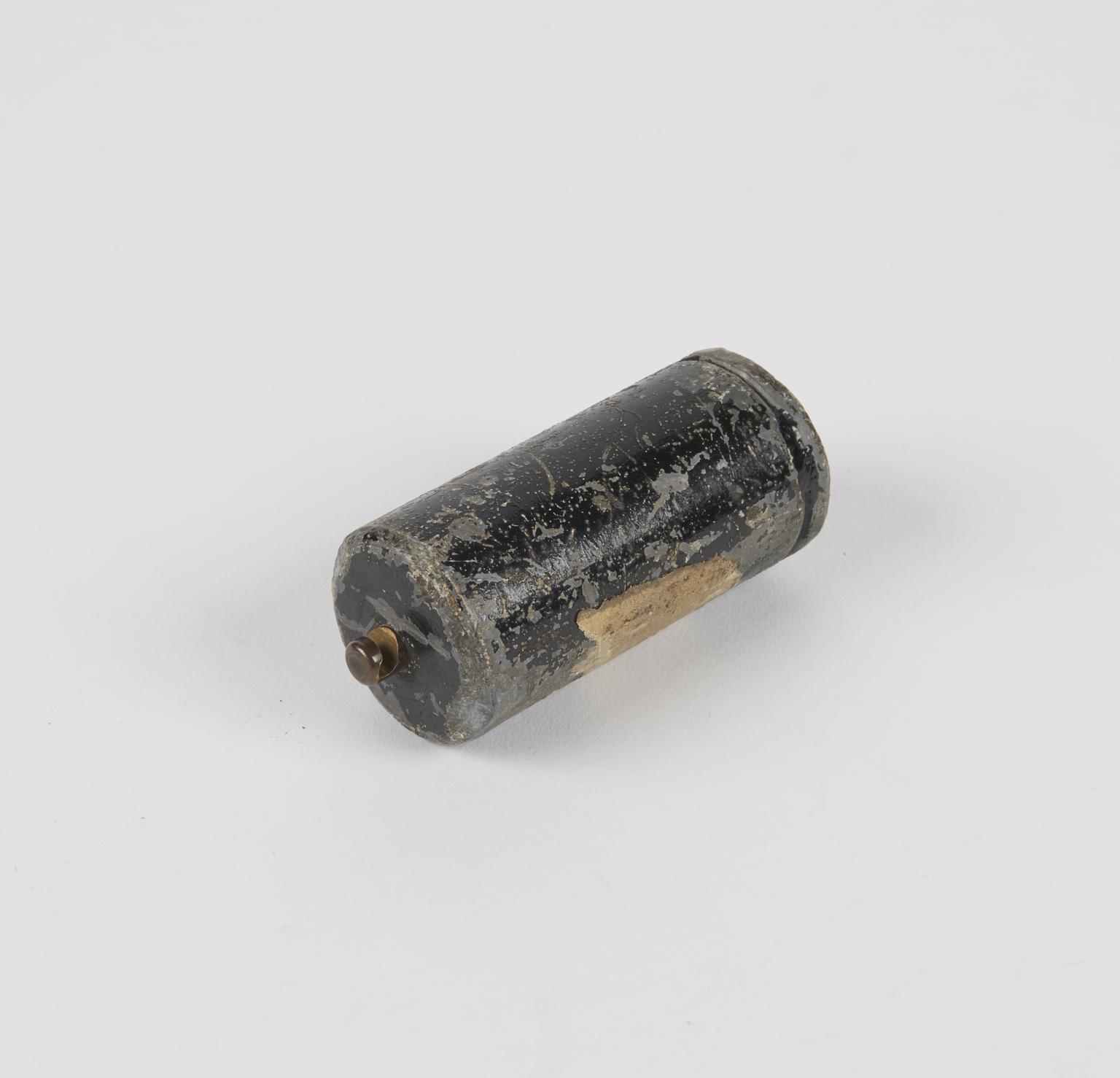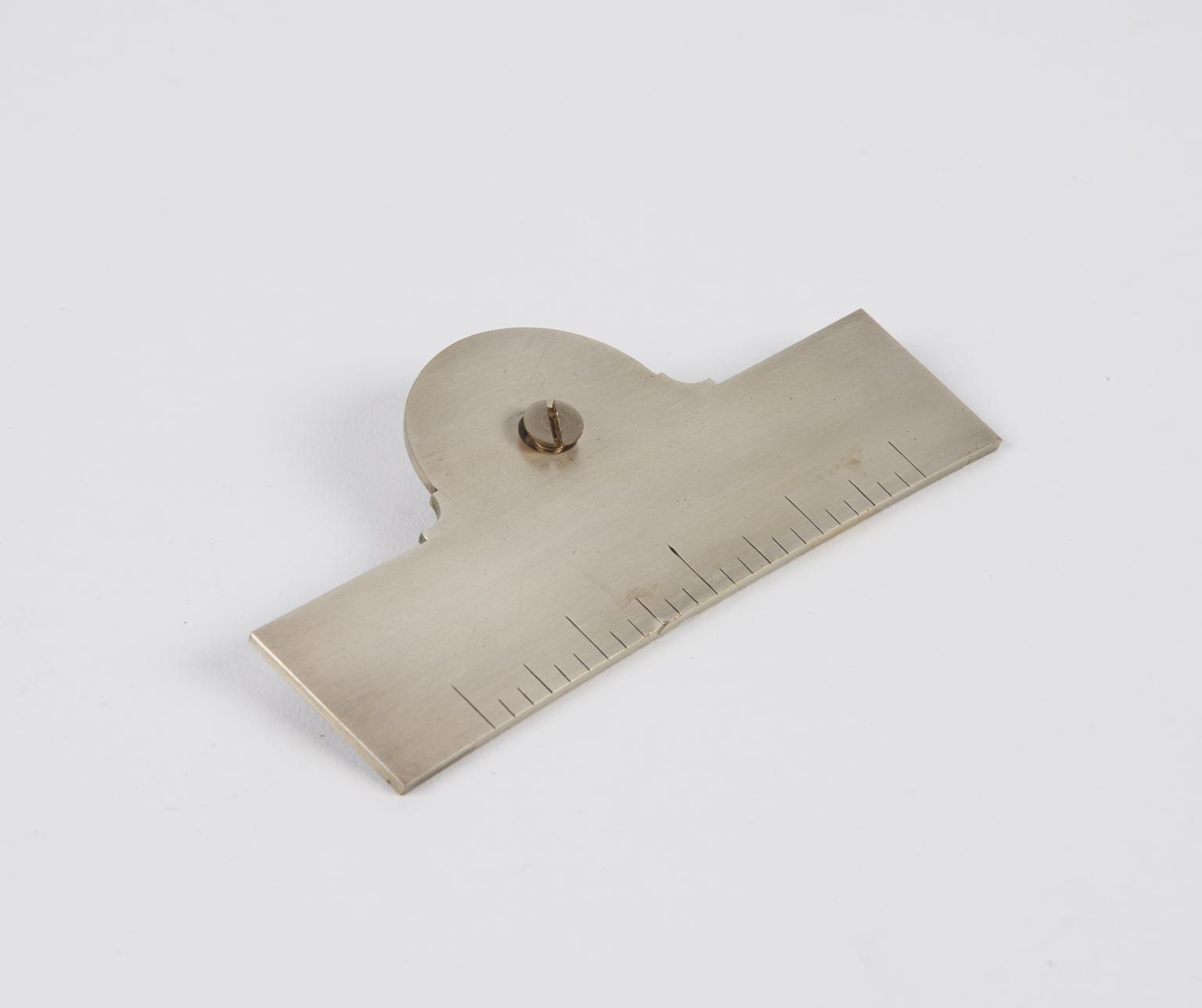Clock with gravity escapement, 1845-1855
Clock with gravity escapement constructed by Mr. J. M. Bloxam, 1845-1855.
- Object Number:
- 1879-32/1
- type:
- regulator clock and gravity escapement
Regulator clock with gravity escapement, hood of the case, brass weight, pendulum, and three keys, by J. M. Bloxam, 1845-1855
Clock with gravity escapement constructed by Mr. J. M. Bloxam, 1845-1855.
Regulator clock with gravity escapement, by J. M. Bloxam, 1845-1855
Regulator clock with gravity escapement. In a gravity escapement the wheel train does not act directly on the pendulum, but is arranged to lift gravity arms which, when falling, give impulses to the pendulum. Such impulses are constant and independent of any variations which may occur in the power transmitted by the wheel train. The gravity escapement shown was invented by J. M. Bloxam about 1850, and was the immediate forerunner of Grimthorpe's gravity escapement as employed in 'Big Ben'. There are two gravity arms which are separately pivoted on the same axis, and the escape wheel consists of an inner wheel or pinion of nine teeth for lifting the arms and an outer wheel of nine teeth for locking the arms. The arms also carry projections which engage with the pendulum. A compensation pendulum consisting of a steel rod with a cast iron jar containing mercury is employed.
Hood for Regulator clock with gravity escapement, by J. M. Bloxam, 1845-1855
Regulator clock with gravity escapement. In a gravity escapement the wheel train does not act directly on the pendulum, but is arranged to lift gravity arms which, when falling, give impulses to the pendulum. Such impulses are constant and independent of any variations which may occur in the power transmitted by the wheel train. The gravity escapement shown was invented by J. M. Bloxam about 1850, and was the immediate forerunner of Grimthorpe's gravity escapement as employed in 'Big Ben'. There are two gravity arms which are separately pivoted on the same axis, and the escape wheel consists of an inner wheel or pinion of nine teeth for lifting the arms and an outer wheel of nine teeth for locking the arms. The arms also carry projections which engage with the pendulum. A compensation pendulum consisting of a steel rod with a cast iron jar containing mercury is employed.

Weight from the regulator clock with gravity escapement, by J. M. Bloxam, 1845-1855

Pendulum scale for the regulator clock with gravity escapement, by J. M. Bloxam, 1845-1855

Key for regulator clock with gravity escapement, unsigned

Key for regulator clock with gravity escapement, unsigned

Key for regulator clock with gravity escapement, unsigned
Components for regulator clock, including metal and acrylic wires and a cog, by J. M. Bloxam, 1845-1855